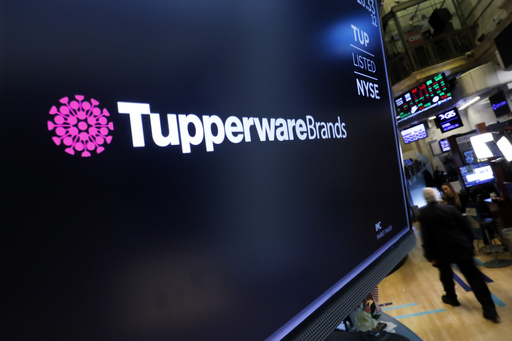
NEW YORK — A U.S. bankruptcy judge has granted approval for the sale of Tupperware Brands, setting the stage for the renowned company to emerge from Chapter 11 bankruptcy and strive for revitalization while continuing to provide its products.
The court in Delaware gave the deal the go-ahead, although it remains contingent on specific closing conditions. Under the agreement, a consortium of lenders will acquire Tupperware’s brand and operational assets for $23.5 million in cash, alongside more than $63 million in debt alleviation.
Last week, Tupperware shifted its strategy from a previously intended asset auction to accepting the lender takeover. With the completion of the sale, the company anticipates operating under the name The New Tupperware Co.
Moving forward, customers in essential global markets will have the opportunity to purchase Tupperware products online and through its tradition-laden network of independent sales consultants. However, Tupperware has emphasized that the new entity will adopt a “startup mentality” to drive future growth.
Although the specifics of this new direction remain unclear, Tupperware has not responded immediately to requests for additional information.
Historically, Tupperware has been a pioneer in food storage solutions, with its origins tracing back to a post-World War II initiative aimed at reducing food waste for families through airtight lid technology. The brand experienced significant growth during the mid-20th century, especially with the rise of direct sales at “Tupperware parties,” which first commenced in 1948.
These gatherings were particularly encouraged as a means for women to generate additional income by selling products to friends and family. The direct-selling model proved so effective that Tupperware soon withdrew its products from traditional retail stores.
Tupperware’s product lineup expanded over the years to include various kitchen items such as canisters, measuring cups, and bakeware, eventually becoming a household name in the U.S. and around the world. Despite its historical successes, Tupperware has faced significant hurdles in recent years.
A combination of an outdated business model and increasing competition contributed to the company’s ongoing struggles. Tupperware indicated in its recent bankruptcy filing that consumer preferences have shifted away from direct sales—which accounted for the majority of its revenue—and towards glass storage solutions rather than plastic alternatives.
While there was a temporary boost in sales during the pandemic as more people cooked and dined at home, Tupperware experienced a consistent decline over the years. Competing brands such as Rubbermaid, OXO, and various storage products available at major retailers like Target, Walmart, and Amazon have captured market share.
Financially, Tupperware’s situation was dire, with a bankruptcy petition filed in September revealing over $1.2 billion in debts against assets valued at $679.5 million.
Spencer Winters, a representative for Tupperware, described the urgent need for a comprehensive global resolution during the U.S. Bankruptcy Court hearing, deeming the sale agreement a beneficial outcome that protects Tupperware’s operations, customer relations, and employment opportunities.
The terms of the sale stipulate that Tupperware will become a privately-owned entity, supported by the purchasing lender group which comprises hedge fund firms like Stonehill Capital Management and Alden Global Capital.
Tupperware has outlined that its initial focus will be on markets in the U.S., Canada, Mexico, Brazil, China, South Korea, India, and Malaysia, with plans to expand further into European and additional Asian markets.
However, there are still unresolved conditions linked to a Swiss entity that need to be addressed before finalizing this transaction, as discussed in court on Tuesday.
